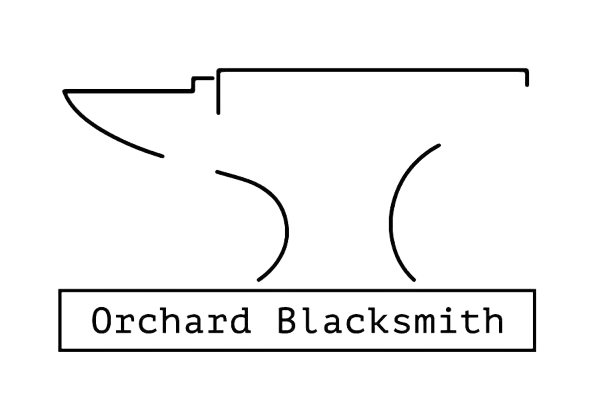From Forge to Finish: Understanding and Controlling the Heat Affected Zone
When it comes to forging metal, heat is both a tool and a challenge. One critical concept that every blacksmith should understand is the Heat Affected Zone (HAZ) — the area of metal whose properties and structure change due to exposure to high temperatures during forging or welding.
What is the Heat Affected Zone?
The Heat Affected Zone (HAZ) is the region of metal adjacent to the area that’s directly heated to its melting or forging temperature. While it doesn’t melt, this zone experiences enough heat to alter the metal's microstructure, hardness, and strength.
In blacksmithing, understanding the HAZ helps you control the quality and durability of your forged pieces by managing heat input and cooling methods.
Why Does the HAZ Matter in Forging?
Mechanical Properties Change: The metal in the HAZ can become softer, harder, more brittle, or more ductile depending on the heating and cooling cycles.
Potential Weak Points: If improperly managed, the HAZ can become a weak spot that might crack or fail under stress.
Heat Treatment Effects: Many heat treatment processes rely on carefully manipulating the HAZ to achieve desired strength and toughness.
Welding and Joining: In welding, the HAZ is critical because it’s where cracks or weaknesses can form, impacting the joint strength.
How to Identify the HAZ
The HAZ isn't always visible to the naked eye but can sometimes be detected by:
Colour Changes: On forged steel, the HAZ may display colour bands from straw yellow to blue as the temperature gradient changes.
Hardness Testing: Using a file or hardness tester to compare hardness in different areas.
Microscopic Examination: For detailed analysis, metallurgists use microscopes to view grain structure changes in the HAZ.
Factors Affecting the HAZ Size and Properties
Peak Temperature: Higher temperatures increase the size and extent of the HAZ.
Time at Temperature: The longer the metal stays hot, the more its microstructure changes.
Cooling Rate: Rapid cooling can harden the HAZ, while slow cooling may soften it.
Metal Composition: Different alloys react differently to heat, affecting HAZ characteristics.
Heating Method: Whether using a forge, torch, or induction heater, the heat distribution impacts the HAZ.
Managing the HAZ in Your Forge Work
Control Heat Input: Avoid overheating; use the minimum heat needed to work the metal.
Heat Evenly: Uneven heating creates inconsistent HAZ zones and weak spots.
Quenching & Tempering: Understand how your quench method affects the HAZ, especially for blades or tools.
Multiple Heat Cycles: Be aware that repeated heating and cooling can enlarge or refine the HAZ.
Use Suitable Materials: Know the steel grade and its response to heat to predict HAZ behaviour.
Practical Tips for Blacksmiths
When forging tools or blades, pay close attention to the edge and core temperatures to keep the HAZ within safe limits.
Avoid overheating thin sections, which can cause grain growth and reduce toughness in the HAZ.
After welding repairs, post-weld heat treatment may be necessary to restore HAZ properties.
Keep records of your heat treatment processes to replicate successful results and avoid failures.
Conclusion
Understanding the Heat Affected Zone is essential for producing high-quality, durable forged items. By managing your forge temperature, heating time, and cooling methods, you can control the properties of the metal and avoid weaknesses in your work.
If you would like to discuss a potential project with us, please do not hesitate to contact us.
